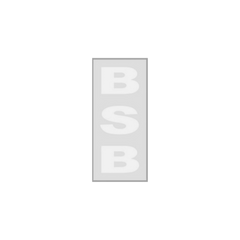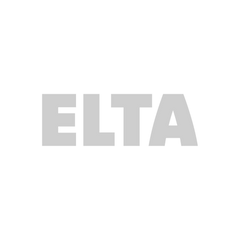Shop All
Aumüller wing bracket F17 for KS2 drive
£49.93 excl. VATUnit price excl. VAT /UnavailableAumüller console K96-1 Bracket for the KS2 Actuator
£44.61 excl. VATUnit price excl. VAT /UnavailableRCU1-RC REMOTE TRANSMITTER FOR RCU1 4-CHANNEL
£21.05 excl. VATUnit price excl. VAT /UnavailableRCU1-TIMER WIRELESS TIMER FOR RCU1
£48.29 excl. VATUnit price excl. VAT /Unavailable- £43.13 excl. VATUnit price excl. VAT /Unavailable
- £59.09 excl. VATUnit price excl. VAT /Unavailable
RCU1-SWITCH WIRELESS SWITCH FOR RCU1
£27.44 excl. VATUnit price excl. VAT /UnavailableRCU1-RC REMOTE TRANSMITTER FOR RCU1 1-CHANNEL
£19.34 excl. VATUnit price excl. VAT /UnavailableEVC-RC8 REMOTE TRANSMITTER 8-CHANNEL
£163.40 excl. VATUnit price excl. VAT /UnavailableWCA 100 REMOTE TRANSMITTER FOR WCC103A/106A
£67.64 excl. VATUnit price excl. VAT /UnavailableS50-2 ROCKER SWITCH 2-GANG 10A WHITE
£48.78 excl. VATUnit price excl. VAT /UnavailableWSK 100 VENTILATION KEYPAD WHITE
£77.43 excl. VATUnit price excl. VAT /UnavailableRCU3-RC REMOTE TRANSMITTER FOR CCU3/RCU3 16-CHANNEL
£94.23 excl. VATUnit price excl. VAT /UnavailableRCU3-RC REMOTE TRANSMITTER FOR CCU3/RCU3 5-CHANNEL
£66.21 excl. VATUnit price excl. VAT /UnavailableS50-3 ROCKER SWITCH 3-GANG 10A WHITE
£64.93 excl. VATUnit price excl. VAT /UnavailableS50-4 ROCKER SWITCH 4-GANG 10A WHITE
£96.16 excl. VATUnit price excl. VAT /Unavailable
Brands
The Importance of Actuator Accessories
Why are they important?
Why are they important?
Modern building automation depends on Actuator Accessories to operate ventilation and smoke control and access systems with reliability. In the UK and across the EU, the design and application of these actuators are governed by standards such as BS EN 12101 for smoke and heat control systems and BS EN 60335 for electrical safety of household and similar equipment. Manufacturers and installers who follow compliance standards will achieve both safety and operational reliability for the long term.
Actuator accessories need to operate reliably in challenging environments according to engineering requirements. This includes meeting the rigorous testing requirements set out in EN 1366 for fire resistance of service installations, and ensuring compliance with the Construction Products Regulation (CPR), which underpins CE and UKCA marking.These frameworks guarantee that actuators function properly to support the life safety systems of buildings.
The implementation of energy efficiency requirements leads to more complicated compliance procedures. UK Building regulations Part L, along with the EU Ecodesign Directive, require that building services equipment such as actuators and drives are designed to minimise energy consumption.The main purpose of actuator accessories in practical applications is to minimize power consumption during idle periods while enhancing operational performance and enabling smooth integration with intelligent building management systems.
The process of specification needs sustainability to become an essential requirement. Building operators who choose actuators that meet ISO 14001 environmental management standards and energy efficiency criteria will decrease their carbon emissions while staying compliant with European and national regulations. Actuator accessories require advanced control features and modular designs and materials that support circular economy objectives.
The installation process requires proper maintenance and performance monitoring for the entire product lifecycle. Regular testing against BS EN 12101 protocols ensures that actuator accessories will perform as intended in smoke and heat exhaust ventilation systems (SHEVS). Real-time monitoring of energy savings and uptime and compliance status becomes possible through the combination of digital building twins with smart monitoring tools for facilities teams.
Actuator accessories function as essential components which enable organizations to meet regulatory requirements while reaching their energy efficiency and sustainability goals. The actuators meet legal requirements and long-term building performance goals because they follow the current British Standards and EU directives and UK building regulations.
Frequently Asked Questions
What must engineers verify about stroke length and clear opening requirements when specifying Actuator Accessories?
What must engineers verify about stroke length and clear opening requirements when specifying Actuator Accessories?
Engineers should confirm that actuator stroke provides the required clear opening in accordance with BS EN 12101-2 (natural
smoke vents) and BS EN 12101-8 (dampers). Stroke length, geometry, and fixing strength must be checked against load. Commissioning should validate full stroke and fail safe behaviour under alarm conditions, with results recorded in O&M documentation.
This answer references a standard(s) that are relevant. There may however be many other standards that need to be considered.
We recommend you refer to our technical bulletins for more detailed references to applicable standards but also you should check with your professional consultants and the approving authorities prior to purchasing to check compliance.
View our Actuators Technical Bulletin for more information
During installation, how should contractors deal with force output vs. sash weight or damper torque?
During installation, how should contractors deal with force output vs. sash weight or damper torque?
Contractors must verify that actuator force
output matches the sash weight or damper torque defined in design. Functional testing should prove smooth operation without over stressing fixings or substrates. Any imbalance should be addressed by re-selection or adjustment before handover.
Which standards or guidance apply to synchronised multi-point drive systems?
Which standards or guidance apply to synchronised multi-point drive systems?
Synchronised drives must comply with BS EN 12101-2 and BS 9999 requirements for smoke control and fire strategy.
Manufacturer protocols should be followed for cable segregation and alignment.
Commissioning must prove simultaneous movement, feedback accuracy, and fault
tolerance.
This answer references a standard(s) that are relevant. There may however be many other standards that need to be considered.
We recommend you refer to our technical bulletins for more detailed references
to applicable standards but also you should check with your professional consultants and the approving authorities prior to purchasing to check compliance.
View our Actuators Technical Bulletin for more information
What are common mistakes with end-limit setting and feedback signals, and how can they be avoided?
What are common mistakes with end-limit setting and feedback signals, and how can they be avoided?
Typical issues include incorrect limit calibration, miswired feedback, or incomplete BMS integration. Avoidance
requires early specification of signal requirements, correct wiring, and witnessed commissioning to demonstrate position feedback under alarm conditions.
How does wind load and façade pressure impact commissioning and handover?
How does wind load and façade pressure impact commissioning and handover?
External loads may prevent actuators from
achieving full stroke or may cause excessive strain on brackets. Commissioning should include tests under simulated load conditions or wind pressure modelling. Results and any corrective measures must be documented in O&M packs.
What site constraints affect push vs. pull orientation?
What site constraints affect push vs. pull orientation?
Constraints include available fixing surfaces, sash geometry, and clearance for actuator travel. Selection should account for whether the actuator works in compression (push) or tension (pull), with installation verified for unobstructed movement and safe load transfer.
What evidence should be included in O&M packs for bracket geometry and fixing loads?
What evidence should be included in O&M packs for bracket geometry and fixing loads?
O&M packs should include bracket drawings, fixing calculations, pull-out test evidence (if applicable), and commissioning records confirming stable operation. This ensures traceability and compliance with manufacturer guidance.
In retrofit projects, how does cable routing and segregation change?
In retrofit projects, how does cable routing and segregation change?
Retrofits often face limited containment and
existing services. Cable routes should avoid sharp bends, heat sources, or
interference with other systems. Power and control cables must be segregated
per manufacturer instructions, with as-built diagrams provided in handover
packs.
What design issues commonly arise with local overrides and FSCS integration?
What design issues commonly arise with local overrides and FSCS integration?
Problems often occur when overrides are not
coordinated with cause-and-effect matrices. Integration must be designed early,
ensuring FSCS operation takes priority, with override points clearly labelled
and demonstrated during witnessed commissioning.
How can contractors troubleshoot problems linked to commissioning timings and cycle tests?
How can contractors troubleshoot problems linked to commissioning timings and cycle tests?
Cycle test failures usually stem from
incorrect stroke setting, low supply voltage, or actuator overload. Contractors
should check alignment, supply capacity, and load calculations. Timings should
be verified against specification and adjusted as required.
What must engineers verify about maintenance intervals and lubrication?
What must engineers verify about maintenance intervals and lubrication?
Maintenance schedules should align with BS
9999 and manufacturer recommendations. Engineers must verify lubrication
requirements, inspect moving parts for wear, and confirm that failsafe
functions remain reliable across the maintenance cycle.
This answer references a standard(s) that are relevant. There may however be many
other standards that need to be considered. We recommend you refer to our technical
bulletins for more detailed references to applicable standards but also you should
check with your professional consultants and the approving authorities prior to
purchasing to check compliance.
View our Actuators Technical Bulletin for more information
During installation, how should contractors deal with retrofit on existing frames?
During installation, how should contractors deal with retrofit on existing frames?
Contractors must verify that frame strength
can withstand actuator loads. Additional bracing or spreader plates may be required. Installation should be validated with functional tests, and retrofit details should be logged in O&M records for traceability.
Which standards or guidance apply to IP rating and environment?
Which standards or guidance apply to IP rating and environment?
Selection must consider environmental
conditions such as moisture, dust, or external exposure. IP ratings should comply with BS EN 60529. Outdoor or high-moisture areas may require protective housings, with compliance evidenced in product datasheets.
This answer references a standard(s) that are relevant. There may however be many other standards that need to be considered.
We recommend you refer to our technical bulletins for more detailed references
to applicable standards but also you should check with your professional consultants and the approving authorities prior to purchasing to check compliance.
View our Actuators Technical Bulletin for more information
What are common mistakes with noise levels and speed trade-offs, and how can they be avoided?
What are common mistakes with noise levels and speed trade-offs, and how can they be avoided?
Designers sometimes overlook the impact of
actuator speed on noise and occupant comfort. Early specification should
balance opening speed (for safety) against acceptable acoustic levels. Mock-ups
or site trials can help confirm suitability before final selection.
How does obstruction sensing and safety stops impact commissioning and handover?
How does obstruction sensing and safety stops impact commissioning and handover?
Actuators with obstruction detection must be
tested under simulated blockage conditions. Failure to verify these can pose
safety risks. Results should be logged, and reset procedures documented for
facilities teams.
What site constraints affect integration with panels and BMS?
What site constraints affect integration with panels and BMS?
Constraints include available I/O points,
cable containment, and signal type compatibility. Early coordination with controls contractors is essential. Commissioning must confirm correct mapping of signals, alarms, and overrides.
What evidence should be included in O&M packs for thermal breaks and mounting details?
What evidence should be included in O&M packs for thermal breaks and mounting details?
O&M packs should include details of any
thermal breaks, fixing methods, and insulation continuity. Site photos and verification of bracket installations help demonstrate compliance with fire and thermal performance requirements.
In retrofit projects, how does emergency manual release change?
In retrofit projects, how does emergency manual release change?
Retrofits may require additional access
points or mechanical release handles. Engineers must ensure accessibility is
practical and documented in drawings. Contractors should test manual release
during commissioning and log the results in O&M packs.
What design issues commonly arise with documentation and O&M packs?
What design issues commonly arise with documentation and O&M packs?
Inadequate records are common — missing
serial numbers, incomplete commissioning logs, or absent cause-and-effect charts. Early agreement on documentation format avoids gaps. Final O&M packs must include all certificates, commissioning data, and maintenance requirements.
How can contractors troubleshoot problems linked to common installation errors?
How can contractors troubleshoot problems linked to common installation errors?
Common errors include misaligned fixings,
insufficient substrate strength, or poor cable segregation. Troubleshooting involves checking against manufacturer installation drawings, re-torquing fixings, and verifying correct wiring. Commissioning should then re-prove stroke and fail safe behaviour.


























